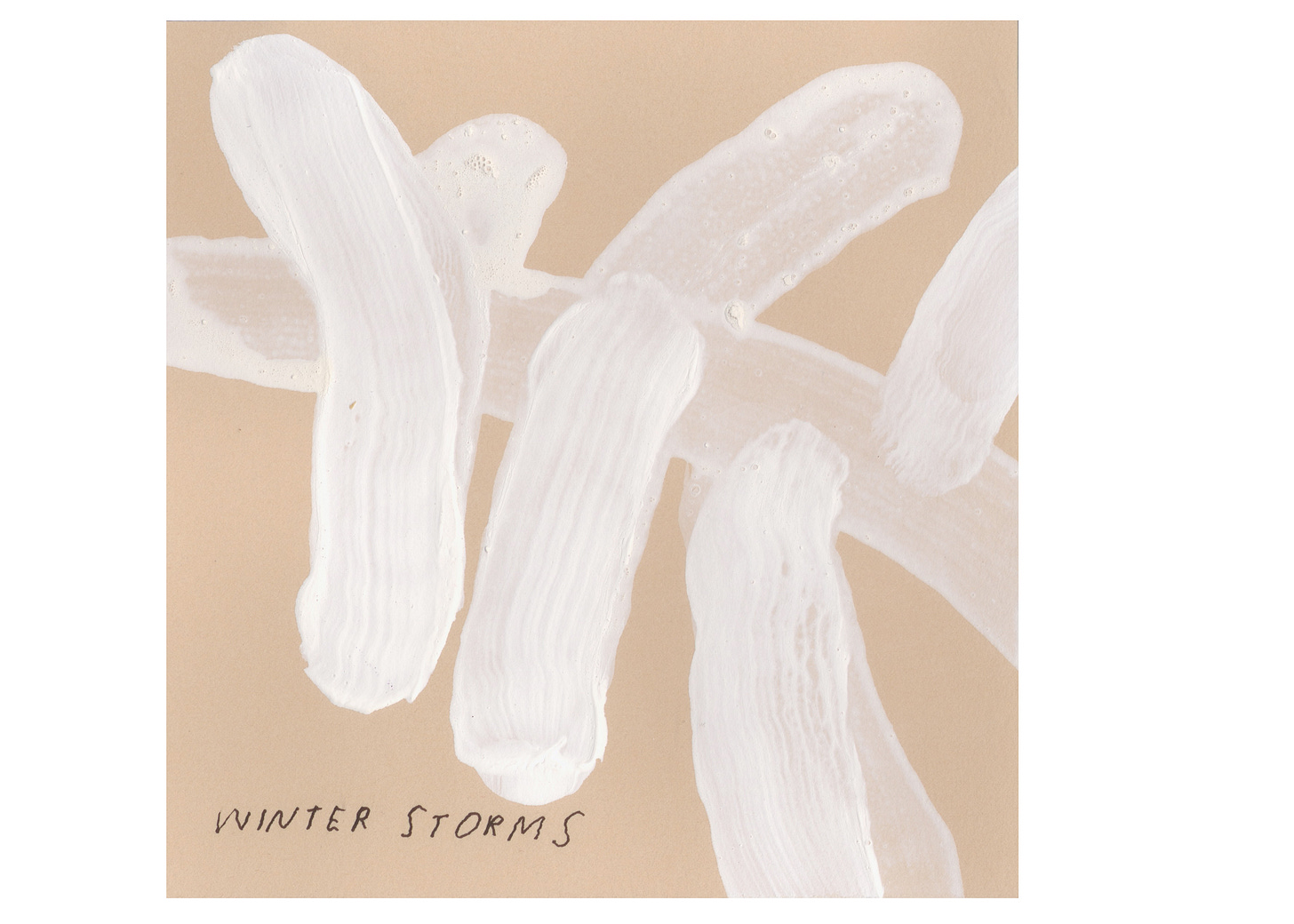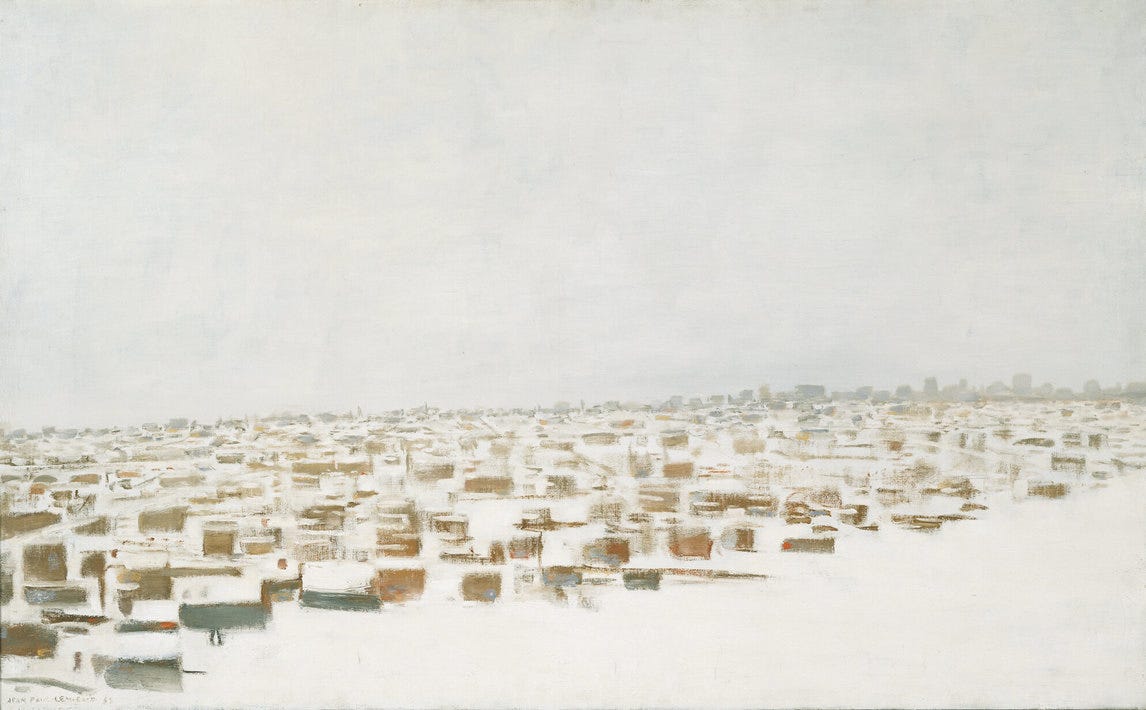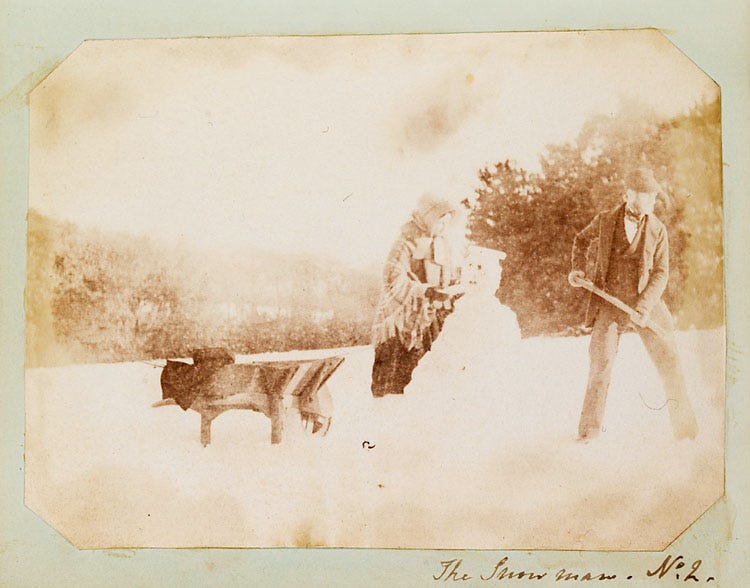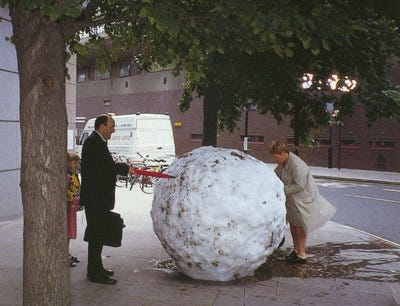Snowmixture
I remember winter

“It is said that Piero de’ Medici, who had been left heir to his father Lorenzo, often used to send for Michelangelo, with whom he had been intimate for many years, when he wanted to buy antiques such as cameos and other engraved stones. And one winter, when a great deal of snow fell in Florence, he had him make in his courtyard a statue of snow, which was very beautiful…”
Life of Michelangelo, p. 332 in the Penguin Classics translation by George Bull.
This past winter I wrote a note to you called The Grassy Dream of Summer and described Suzanne’s backwards calendar and using her logic I was thinking that now that we are in the midst of summer and everything is upside down that maybe you need a touch of the cool calm of winter. In Canada, it’s hard not to think of William Kurelek’s Winnipeg winter scenes, and then I started remembering sliding back down the icy hill back to Molson Hall drunk and laughing and with a bit of a crush on my friend’s older sister who drove us all the way to Montreal on New Year’s eve, and I was a teenager and alive and freezing. And from there, I remember the big hill of icy snow in the parking lot of my elementary school where a kind of wintry Lord of the Flies situation took over hundreds of kids in snowsuits battling to get to the top and stay there, and though I could only ever sneak around back to make it about half-way up this dirty boot-hardened hill, it still felt thrilling. And then briefly, I wondered about the history of snowballs and snow people which lead me to Leonardo Da Vinci and from the Renaissance back to Andy Goldsworthy who calls snowballs a container for feelings.
But what I really wanted to tell you about was a kind of magical recipe made by my mother that she called snowmixture. It was blue evening, and the snow was coming down big and soft and slow, and she would send us out with a big stainless steel bowl into the yard of our little house on Draper Lake. We would find the softest, cleanest, newest snow, all four of us kids taking this part of the process very seriously, and you could see the orangey glow of the kitchen light and the shadows of tree branches and the snow softening the whole world into a kind of sparkling sea, and we would come back inside, hair wet with melting snowflakes, and all of us carrying the bowl carefully, and Mama would divide the mixture evenly and ask us what sort of flavour we wanted, and it seemed like she could make any kind of snowmixture you could imagine. I see now that she was only adding a little honey, or white sugar or lemon or grape juice to snow to make a kind of natural slushy, but it did not feel like that. It felt like she was working with winter itself, inventing recipes for each particular child. I remember grape juice sinking into the white snow. I remember her stirring it up, testing and tasting it, and the way the colour changed. I remember her scooping it into a bowl for me and that the snowmixture was something between a liquid and a solid. It was both of the inside world of the kitchen, and from the wild outside of forest and sky. It was a kind of compression of something that I had no words for. Somehow Kurelek and Lemieux and Andy Goldsworthy and maybe even Leonardo da Vinci are doing this same thing, packing the soft universal of winter into something as holdable and universal as a snowball.





“A snowball is simple, direct and familiar to most of us. I use this simplicity as a container for feelings and ideas that function on many levels.” —Andy Goldsworthy
For Subscribers to the Colour Lab: My favourite poem of winter is below:
Keep reading with a 7-day free trial
Subscribe to The Colour | Newsletter | Lab | Community to keep reading this post and get 7 days of free access to the full post archives.



